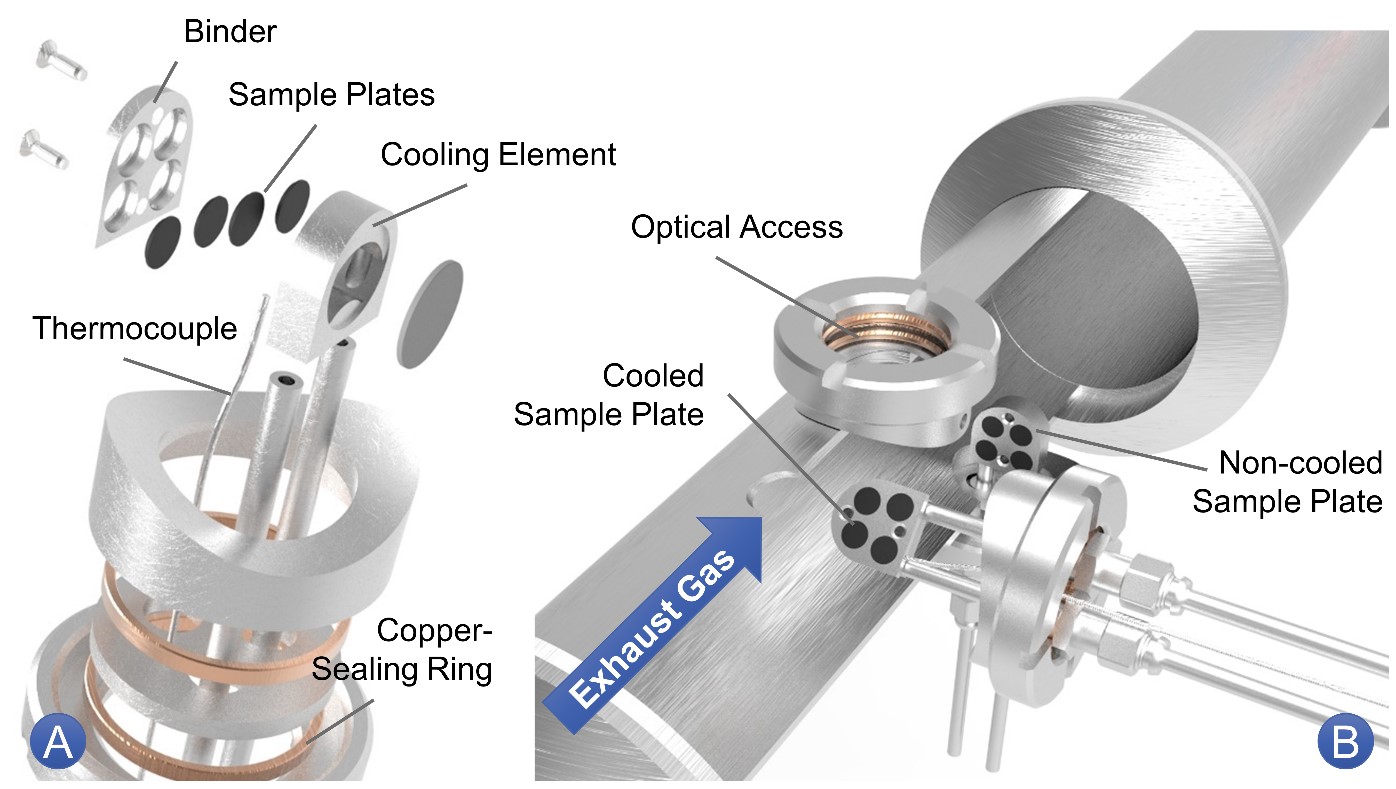Exhaust gas composition at low temperatures (FVV 1316)
This research project of the Forschungsvereinigung Verbrennungskraftmaschinen e. V. is realized in cooperation with the Institute of Internal Combustion Engines (IFKM) at Karlsruhe Institute of Technology (KIT) (https://www.ifkm.kit.edu). Increasing emission restrictions and aggravating environmental boundary conditions for determining emissions in practical driving (RDE) can no longer be met by purely strategic engine measures alone. Ensuring the functionality of exhaust gas-carrying components and systems under all boundary conditions in conjunction with intelligent engine operating concepts is therefore indispensable. In particular, system-related cold-start conditions in short-haul traffic present a special challenge. Under these operating conditions, increased pollutant emissions can be determined by internal engine effects and unfavorable operating conditions of the exhaust gas aftertreatment systems. In addition, the exhaust gas components have a considerable influence on the deposition and fouling process of exhaust gas carrying component surfaces as well as on the performance efficiency of the exhaust gas aftertreatment systems under the influence of different deposition mechanisms. Within the scope of the research project, the exhaust gas composition of a gasoline as well as a die-sel engine at ambient and engine start temperatures of -22 °C to 23 °C will be examined in more detail on the basis of real driving cycles. In particular, the focus is on the primary mechanisms of deposit formation on the exhaust gas-carrying component surfaces. The cold-start tests are carried out on both a modern gasoline and diesel production engine with the respective series engine periphery. With the focus on realistic engine operation under cold ambient conditions, engine-specific operating strategies are considered on the one hand and dynamic driving behavior under real driving conditions is added on the other. The cold-start cycles are based on both the inner-city part of the WLTC driving cycle and realistic engine-specific driving profiles based on urban RDE driving.

Figure 1. Exploded view of a sample plate holder for holding four test carriers (A) and their integration in the exhaust system (sectional view, B). The figure was taken from the Final Report of the FVV Project No. 1316.
For the analysis and characterization of the coating layers on exhaust gas carrying component sur-faces, a novel measurement method is added. This includes a sample plate holder with small, ceramic test carriers positioned within the exhaust system. In addition, it is possible to differentiate between actively cooled and non-cooled sample plates in order to analyze the influence of the component surface temperature on the deposition tendency. The accumulating deposit layers are tracked with a high-speed camera during engine operation. A more detailed analysis of the deposit composition on the sample plate surfaces after a cold start cycle is carried out using gas chromatography with mass spectrometry coupling (GC/MS). In addition, temperature-programmed oxidation (TPO) in a thermobalance can be used to determine the reactivity of the accumulating deposits. Furthermore, elemental analysis (EA) and high-resolution transmission electron microscopy (HRTEM) in combination with image analysis algorithms can be used to investigate the deposit composition from the micro to the molecular level. A more detailed characterization of the deposition process of exhaust gas-carrying components under highly dynamically varying exhaust gas composition in transient engine operation is possible by using additional measurement systems. A particle spectrometer is used to analyze the particle size distribution and the number of particles. Additionally, gas phase species in the exhaust gas are detected with time resolution using Fourier transform infrared spectroscopy (FTIR).
Within the framework of this project, the following publications were published, referred to for further information:
- Influence of Low Ambient Temperatures on the Exhaust Gas and Deposit Composition of Gasoline Engines Appel, D.; Hagen, F. P.; Wagner, U.; Koch, T.; Bockhorn, H.; Trimis, D. 2021. Journal of energy resources technology, 143 (8), Art.-Nr.: 082306. doi:10.1115/1.4050492
- Influence of Low Ambient Temperatures on the Exhaust Gas and Deposit Composition of Gasoline Engines Appel, D.; Hagen, F. P.; Wagner, U.; Koch, T.; Bockhorn, H.; Trimis, D. 2020. ASME 2020 Internal Combustion Engine Division Fall Technical Conference, November 4–6, 2020, The American Society of Mechanical Engineers (ASME). doi:10.1115/ICEF2020-2932

